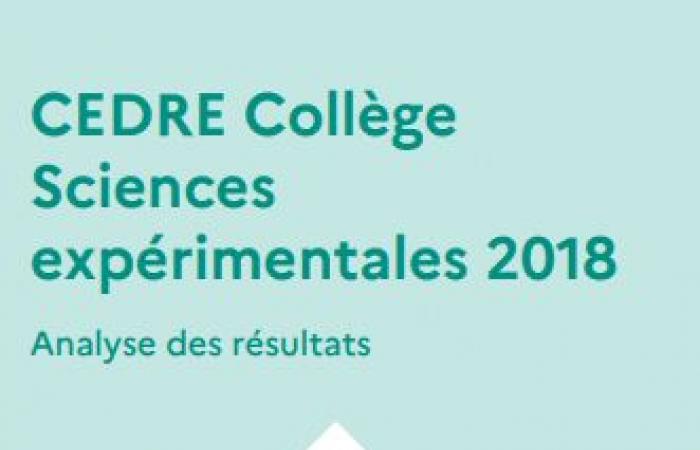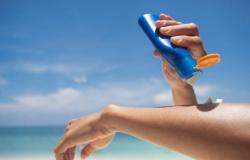The results of the Cèdre survey leave no room for doubt as to the significant drop in science results at the end of middle school. In this report published by the DEPP in June 2024, the average score fell from 250 in 2013 to 238 in 2018. The best students are less good and the number of weakest students has doubled. These results are consistent with the TIMSS and PISA surveys.
Boys’ level drops further
The CEDRE survey (Cycle des Evaluations Disciplinaires Réalisées sur Echantillons) conducted in 2018 reveals its results 6 years later. “These evaluations provide insight that is of interest to all levels of the education system,” we can read in the 272-page report. Students in 3th selected answer a battery of questions on a digital medium. In May 2018, the 4,685 students from 3th from 204 colleges were assessed on both the 2008 and 2016 programs in SVT and physics-chemistry. The test lasts 1h30 and some students also took a practical test. That’s the context.
In terms of results, the average score of 250, which had been stable since 2007, fell by 12 points in 2018. “The average score for boys fell by 16 points compared to 2007 and that of girls by 10 points.” The authors divide the students into 6 performance groups ranging from very low to high level. In 2013, there were 2.6% at a very low level, this percentage has now risen to 5.7%. Students belonging to the highest level group now represent only 5.3% in 2018 compared to 9.2% in 2013.
Difficulties with open questions
The advantage of this type of national survey is that the questions remain largely identical from one study to another. For example, in SVT, on a question about the conquest of the living environment by plants, more and more students confuse flowers, grains and fruits. The score for this question goes from 83% success to 72%. For another question on the oxygen level of a river, the success rate drops by 7 points. “The reading of the document seems to have been partial,” explain the authors.
In physics and chemistry, 20.7% of students confuse stars and planets. Only 11.6% of students surveyed know how to classify objects by size: star, planet, galaxy and galaxy cluster. Open questions are less attractive to middle school students. Indeed, on an item concerning the change of state of water, “the non-response rate reached 14.34%, probably because it is an open question which can discourage some students”. Long live MCQs!
Good command of the microscope
In the report, the authors explore the skills of the 6 groups by explaining what they are able to do but without ever indicating what they cannot do. For example, the 5.7% of students belonging to the weakest group “are able to restore simple knowledge most often in relation to their experience” and “know the basic manipulative gestures” in physics and chemistry. The students in the strongest group “rigorously handle scientific vocabulary and formalism from the infinitely small to the infinitely large”. These middle school students know how to write a result with the correct unit and demonstrate a critical mind in the analysis of complex situations. Those in the group just below them are only critical when faced with an experiment. In SVT, the students in the strongest group are able to analyze an antibiogram, observe dividing cells or even criticize a model. Nearly 80% of students know how to use a microscope and master certain stages of the scientific approach. Phew!
In physics, the mobilization of mathematical skills such as the use of a literal expression or the calculation of average is the key to making the difference. The report also shows a very low success rate (4.13%) for an exercise on a complex task around the salinity of the Dead Sea. “The non-response rate is 30%”. Here again, the weakness of the argumentation, the erroneous conversions and the partial use of the documents are noted.
“The multiplicity of media is a hindrance”
For practical work, 70% of the students surveyed correctly created a simple electrical circuit with two lamps in derivation. In 2007, 90.5% of them mastered this type of assembly. For measuring the intensity, only 57% managed to place the ammeter in series. These practical sessions highlight the important role of the teacher in front of the computer. “The student gains more confidence and gets discouraged much less quickly than when he is alone in front of the computer.”
In SVT, the most positive aspect perhaps comes in the chapter on reproduction and sexuality. “All students identify a method of contraception that protects against STIs. From group 1, middle school students know about the existence of HIV screening tests,” the authors indicate.
The importance of the school report
In practical tests in SVT, a very large number of students confuse “result” and “interpretation”. The notion of witness is also less well mastered. In addition, when it comes to using several documents of different nature, the difficulties encountered are significant. “The multiplicity of media seems to be a hindrance to investigation”, decide the 22 DEPP specialists. As for the construction of a simple table, 24% do it without even drawing lines. “Where is the rule?”, ask the authors.
In geology, only half of the students master the concepts of geological eras, rock formation and fossil formation. Wegener’s theory on plate movement is not mastered at all. 22% of the questionnaire items dealt with the planet Earth part.
Finally, the authors note that “if the work were taken into account in the overall assessment of the student (report card), the latter would be more involved whether in experimental activity or in written assessment.” The famous question before the session: “is it graded?”
Less than 15 minutes of personal work per week
The report also provides more information on the conditions for teaching experimental sciences in France. Only 75% of science teachers report having a specialized room on a recurring basis. This figure should be compared with the 2019 TIMSS survey. Here, 32% of teachers report having students often manipulate. Beyond laboratories and material aspects, the question of groups is also central and is unfortunately only rarely mentioned in this report.
The student questionnaire shows that 40% of students would like to pursue a scientific career (compared to 33% in 2013). Biology and chemistry are among the most popular subjects. “A large majority of students feel that they are well supported by their science teachers in their learning”. For personal work, working time is reduced to next to nothing. “43% say they work on science for less than 15 minutes per week”. Only 5% work more than an hour per week. Are these the same people in the strongest group?
Finally, this CEDRE survey highlights the many outings, trips and science clubs organized during the year. “29% of teachers who responded to the questionnaire called on an external speaker during the year”. 28% prepared an exhibition, 46% went on an outing and 11% took part in a competition with the class.
The new CEDRE study on science was carried out this month of May 2024.
Julien Cabioch
Read the report
In the coffee
What future for science teaching?
https://www.cafepedagogique.net/2023/01/31/quel-avenir-pour-lenseignement-des-sciences/
TIMSS: What should we remember for teaching science in middle school?
https://www.cafepedagogique.net/lexpresso/Pages/2020/12/08122020Article637430181218329432.aspx.html
Science in middle school: a continued vagueness
https://www.cafepedagogique.net/2023/03/07/sciences-au-college-un-flou-entretenu/






